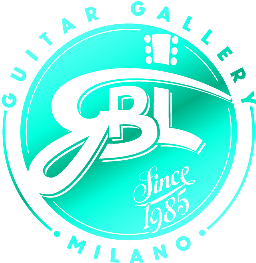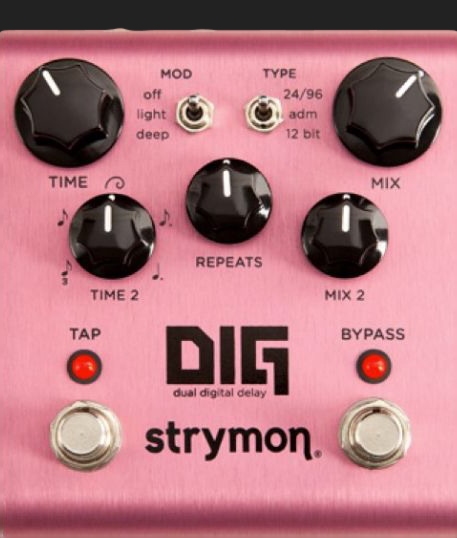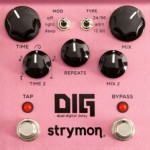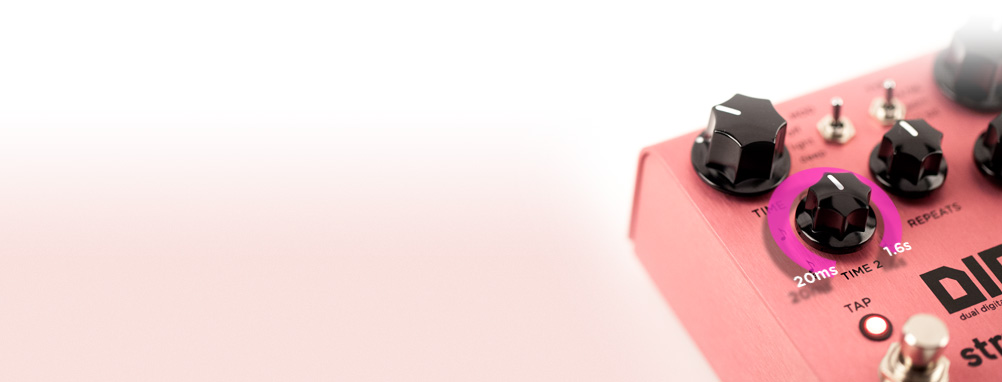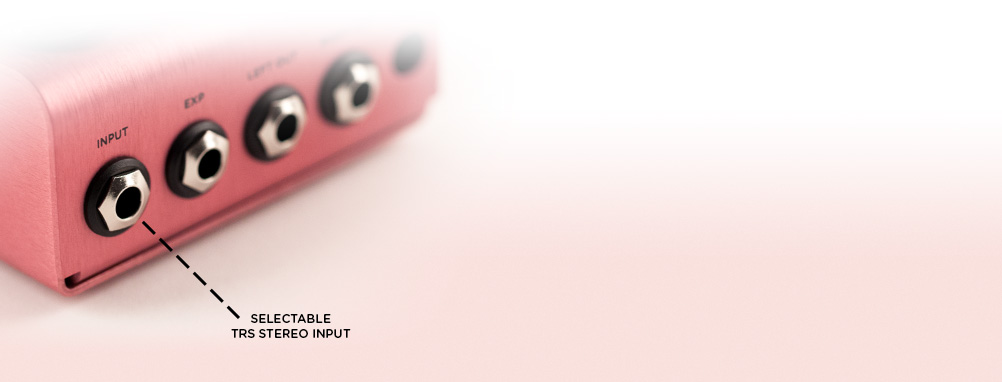Two Delays Join Forces.
ADM SOUNDS
- The dotted quarter setting creates a driving rhythm that’s filled out by deep modulation.
- A dotted eighth rhythm makes good use of the percussive nature of the ADM delay type in ping pong configuration.
- With similar settings to the previous clip, the delays are now configured in series to create a different dynamic.
-
- Present ●
0:02 / 0:36
- Present ●
- A fast delay time with deep modulation highlights the presence and clarity of the ADM delay type.
- Effect is engaged at :03. Using Free Mode, Delay 2 is set to a short delay to create a chorus/flange effect, feeding into Delay 1 with full-bandwidth repeats.
- Effect is engaged at :04. By using Free Mode and setting Delay 2 time to minimum, a heavy flanger-style effect is created to feed Delay 1.
- The Golden Ratio subdivision is paired with a high-pass repeats filter to progressively remove the low-frequency content of the regenerated repeats.
Config:
● Series
●● Parallel
○○ Ping Pong
12 BIT EXAMPLES
- The eighth note division creates a double-time repeat while the Mix settings accentuate the down-beat. Repeats filtering adds further complexity.
- Effect is engaged at :03. The dotted eighth note subdivision from Delay 2 is mixed higher than the quarter note from Delay 1, creating a syncopation for the rhythm chords.
- With high repeats for Delay 2, the short regenerating delays are filtered to create a dirty digital delay.
- We start with a single medium length delay with deep modulation. Using Free mode, Time 2 is set to minimum. At :14, Mix 2 is turned up creating a chorus that accompanies Delay 1.
- The dotted eighth syncopation drives some arpeggiated chords that are filled out with light modulation.
- Effect is engaged at :04. Using Free Mode, Delay 2 can be set to very short delays, creating chorus and flange tones. Here a heavy guitar tone highlights a flange sound from Delay 2 feeding a short delay.
- Effect is engaged at :04. A dirty guitar gets doubled with a short slap delay from Delay 1.
- The Golden Ratio creates an ambient wash with deep modulation and some repeats filtering.
- Heavy repeats filtering is showcased with deep modulation to create a moody ambience with the Golden Ratio subdivision.
- With similar settings to the previous clip but without any feedback filters, the ambient wash sustains at full bandwidth.
Config:
● Series
●● Parallel
○○ Ping Pong
24/96 EXAMPLES
- The Ping Pong configuration creates a bouncing stereo movement to the dotted eighth syncopation.
- With the repeats filter set to remove the low-end, a big ambient delay setting provides a great canvas for some ethereal E-bow explorations.
- The triplet subdivision sets the rhythm for the arpeggiated triads.
- A fast-paced riff gains added rhythmic complexity from the dotted eighth subdivision.
- The delays are synced by an eighth note subdivision, while the Parallel configuration keeps them from interacting with each other.
- High Repeats with the Golden Ratio subdivision creates a soft pad, while the high Mix 1 setting emphasizes the tempo of the music.
- Some light modulation adds depth to this fast and clean dotted eighth delay.
- Effect is engaged at :04. An eighth-note subdivision propels the transparent, wide-bandwidth 94/96 delay. With repeats at minimum, the rhythm stays focused.
- Effect is engaged at :07. The dotted eighth subdivision adds an accent to the dominant quarter note of Delay 1.
Config:
● Series
●● Parallel
○○ Ping Pong
Series, Parallel, Ping Pong
Set up your two delays in one of three configurations. Series is like setting up pedals in a chain on your board, feeding Delay 2 into Delay 1.Parallel will orient your delay lines so that they remain independent—Delay 1 in the left channel and Delay 2 in the right channel. With Ping Pong, each delay acts as a ping pong delay, interacting together when both Mix knobs are turned up.
Free Mode
Don’t want your delays to be synchronized? Free Mode disables time sync and subdivisions between Delay 1 and Delay 2, giving the Time 2 knob a full delay range from 20ms to 1.6s.
Circular Repeats
Holding down the TAP footswitch enables circular repeats, where both delay lines maintain a static volume and repeat continuously until the TAP footswitch is disengaged. At this point, all previous settings will be restored.
Expression Pedal
Input allows for the connection of either an expression pedal, external tap, or Favorite switch. Plug in an expression pedal and control any one knob with your foot. Plug in an external tap pedal to remotely tap in your tempos. Plug in a Favorite switch to save and recall a favorite preset.
TRS Stereo Input
We know that there are some out there that like to run stereo rigs. This is why we’ve added the option of running the input of your DIG in stereo. Flip a jumper inside your pedal, use a TRS splitter cable, and now you’ve got yourself a stereo input.
SPECS
SOUND DESIGN
- Two simultaneous, integrated delays, with unique digital rack delay voicings
- Five dual delay adjustment and tone shaping knobs: Time, Time 2, Mix, Mix 2, Repeats
- One modern and two classic digital delay voicings: 24/96, adm, 12 bit
- Five rhythmic subdivisions: Triplet, Eighth, Golden Ratio, Dotted Eighth, Dotted Quarter
- Three choices for delay line modulation: Off, Light, Deep
- Five “hidden” knobs for deep dual delay control: Delay 1 Subdivision, Sync/Free Mode, Filter, Config, Delay 2 Repeats
- Selectable Free Mode disables subdivisions and synchronization
- Press and hold Circular Repeats effect
- 20ms – 1.6s delay range (40ms – 3.2s with Half Note Delay 1 Subdivision)
INS,OUT,SWITCHES
- High impedance mono input, with selectable TRS stereo input
- Stereo output
- Three signal routing configurations: Series, Parallel, Ping Pong
- Tap tempo and Bypass footswitches
- Expression pedal input allows the connection of either an expression pedal (for selectable control over any knob parameter), external tap pedal (for remote control of tempo), or Favorite switch (to save a Favorite preset)
AUDIO QUALITY
- Super low noise, high performance 24-bit 96kHz A/D and D/A converters
- 115db typical signal to noise
- Analog dry path for a zero latency dry signal that is never converted to digital
- +8dBu maximum input level easily handles instrument and line signals
- 20Hz to 20kHz frequency response
- Premium analog front end and output section
- Super high performance SHARC DSP in a compact form factor
- 32-bit floating point processing
MORE
- True Bypass (electromechanical relay switching)
- Selectable Trails Mode with high quality, transparent Analog Buffered Bypass mode
- 9V center negative DC power supply included, 250mA current draw
- Strong and lightweight anodized carnation pink chassis
- Designed and built in the USA
